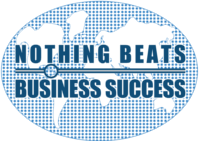“My mouth shall speak of wisdom; and the meditation of my heart shall be of understanding” – Psalm 49:3
BIM Ventures is nearing the end of a pilot project to test the efficacy of the CBET Shepherding Model™. It was a revealing exercise with many lessons learned. The results from the pilot project have uncovered that there is no constraint in the context of finding business ideas with the “DNA of an Elephant” since, in addition to the 12 considered, there were over 70 others who voluntarily came forward and who could not be considered because of the lack of resources required over the pilot project period.
Based on the feedback from the Shepherds that were assigned to each project, there is absolutely no doubt that the hypothesis that shepherding mitigates the risk of business failure was upheld.
The major constraint arising from the pilot project is the continuing difficulty to access seed and venture capital funds from the available financial markets. The next phase of the project will, therefore, be focusing on targeting specific institutions to set up individual funds which would be managed by a CBET (Barbados) Fund Management company using the systems established during the pilot project.
CBET Inc. now proposes to franchise the CBET Shepherding Model™ to governments, universities and other institutions who may be interested. The arrangement is that CBET Inc. will provide an Operations Manual, Implementation and Consulting assistance and Updates to the Operations Manual; the consideration for which will be a licensing fee to be negotiated on a case-by-case basis.
It is now clear in our minds that, in the context of a business idea, there are four distinct processes which lead to sustainable development of the idea. These are: (1) the inventor from whom the idea emanates: (2) the innovator who converts the idea to a product/service that can be sold in the marketplace; (3) the entrepreneur who is passionate and determined to convert the product/service into a profitable enterprise; and (4) the shepherding process which guides the entrepreneur, with management tools across the gamut of businesses functions and mitigates the risk of business failure.
There are some people who generate ideas but have no further interest in the process. If they are blessed to sell these ideas then they may benefit to the extent of the value of the sale. CBET Inc. has a process which generates business ideas from a blank sheet of paper through its High Impact Growth Strategy (HIGS) two day workshops.
Innovators will take the idea and package it into a product or service for sale. Sometimes the inventor may also be the innovator. The entrepreneur has the passion for business (corporate governance, marketing, operations, people and investment capital) and will persevere in the face of adversity to develop a profitable business which will give an attractive return to the investors.
Very often especially in the creative industries sector, the inventor and/or innovator do not have the attributes necessary to be the entrepreneur and may be well advised to get the ego out of the way and seek a partner who will complement his/her resources and increase the chances of a successful enterprise. Indeed, said another way, it may well be better to be a small fish in a big pond rather than be a big fish in small and dwindling pond.
An important factor in understanding learning styles is understanding brain functioning. Both sides of the brain can reason, but by different strategies and one side may be dominant. The left brain is considered analytic in approach while the right is described as holistic or global. A successive processor (left brain) prefers to learn in a step-by-step sequential format, beginning with details leading to a conceptual understanding of a skill. A simultaneous processor (right brain) prefers to learn beginning with the general concept and then going on to specifics.
In the creative industry sector, which includes film, music, fashion, fine arts, culinary arts, literary arts and graphic arts, maybe, even some sports, we are often dealing with right-brain functionaries who are being driven by spiritual awareness and, sometimes are not gifted with the left-brain activity of logical reasoning. This may often lead to a misunderstanding since the cultural industry practitioner is usually quite clear on his idea and how to convert that idea into an appealing product for sale, but does not pay the attention to detail that is required to make a success out of the business. This, therefore, results in frustration for the artist who does not fully escape from the notion that the creation of a piece of art is not enough to guarantee business success. He must recognise fully that the efficient execution of the functions of a business have to be upheld. These functions are governed by the elements of management which are planning, organising, staffing, leading and monitoring.
The partner providing the entrepreneurial attributes may often become frustrated because there are demands made on the entrepreneur by the artist which are not in synch with the logical business approach that has to be adopted if the business is to achieve sustainable success. However, the entrepreneur and shepherd also have to empathise with and show appreciation for the contribution made by the artist even though the right and left brain functions may not always be in harmony. The aim should always be to benefit from the synergies of interaction of the parties involved so that not only the enterprise benefits but that the community, the government and the country also benefit.
